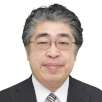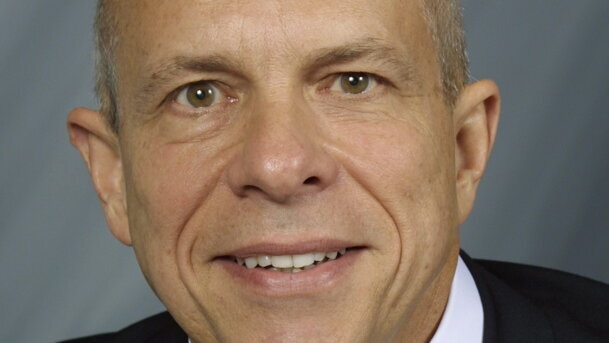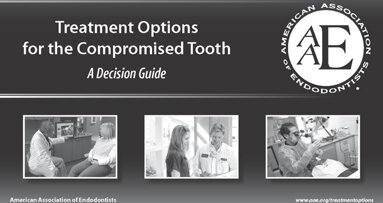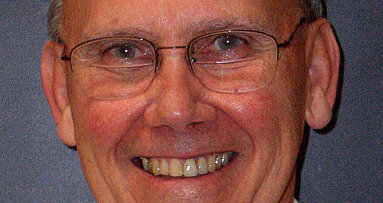Dental Tribune had the opportunity recently to interview Dr Louis E. Rossman, president of the American Association of Endodontists. Rossman, who is in private practice in Philadelphia, PA, USA, discussed AAE initiatives that have significantly increased media coverage of endodontics and have positioned the association as an authoritative resource in root canal education. He also discussed the need to involve endodontists in treatment planning decisions, and he stressed the importance of saving patients’ natural teeth whenever possible.
The AAE president reminds dentists that while implants may be the best option for many patients, the lifetime benefits of maintaining natural dentition are better than artificial replacements.
What is the biggest misconception that the general public has about root canal therapy, and what is the American Association of Endodontists doing to change that?
The most common misconception the public has is that root canal treatment is painful and is a dental procedure to be feared. Surveys show that 58 percent of consumers are nervous or apprehensive about having a root canal, which is more than any other dental procedure! This presents a unique challenge to our profession and specialty.
Since 2004, the American Association of Endodontists has been focused on dispelling the myths and misconceptions about endodontic treatment through its public relations campaign. Using a combination of consumer media outreach, direct communication with general dentists and messaging to dental educators and students, we have been taking steps to raise awareness of endodontists and their valuable role in providing treatment that is virtually painless to save natural teeth. We are encouraged by the fact that media coverage of the specialty has increased 360 percent since the launch of our campaign, and 89 percent of patients who have had a root canal performed by an endodontist would return to one.
What is the role of the general practitioner?
I must emphasize that we greatly value the role that the family dentist plays in the patient’s decision-making process. Our research shows that when considering root canal treatment or an extraction, 57 percent of patients rely on their dentist’s advice. Accordingly, the AAE has made it our goal to serve as the most reliable and accessible source of endodontic information for general dentists.
The reality is there simply aren’t enough endodontists to cover the 22 million root canal procedures performed each year. Because the majority of root canal treatment is performed by general dentists, we strive to provide them with access to the latest clinical information and resources about endodontics, and we offer our assistance as partners in providing the highest quality of patient care. The AAE’s Endodontic Case Difficulty Assessment Form helps practitioners gauge their skill and comfort level at various levels of case complexity, and it allows them to easily determine when referral to an endodontic colleague would be in the patient’s best interest. We also strongly encourage all dentists to build strong relationships with their local endodontists, to become better informed on the issues and advances in the specialty.
With all the growing excitement surrounding dental implants these days, what does that say about the future of endodontics?
There is no doubt that dental implants are a valid treatment option for many people today, especially edentulous patients. However, I’ve become increasingly disturbed by the speed with which many dentists are embracing implants as a replacement for natural teeth that could be saved with endodontic treatment. Our goal as dentists is to make every reasonable attempt to maintain the natural dentition. Nothing looks, feels or functions like the natural tooth. Consumer surveys conducted by the AAE show that patients increasingly prefer to have a root canal than have their tooth extracted and an implant placed.
The current debate among dental professionals regarding implants underlines the fact that clinical studies of implant success take place under very controlled circumstances and utilize definitions of success that are far less stringent than similar studies of endodontic success rates, which are often performed in typical practice settings and consistently have equally high success rates. Just because a leading implantologist places a satisfactory implant in a laboratory study does not mean that implants are as successful as root canal treatment, but it takes a discerning evaluation of the literature to understand and appreciate this difference. With implant companies aggressively marketing their product, it’s sometimes hard to separate the wheat from the chafe.
My view is that the endodontic specialty will continue to thrive because, not in spite of, dental implants. Research is increasingly showing1 that significantly more implants require postoperative intervention than endodontically treated teeth, making implants a more inconvenient and costly option to the patient in addition to being less successful in the long term. As dentists begin to see the long-term outcomes of implants in the future, it will be apparent that the full spectrum of endodontic treatment, including advanced surgical techniques that can be proficiently performed by endodontists, is a far more reliable and prudent choice for the vast majority of patients.
In your view, what are the most difficult challenges faced today by endodontists and general dentists who perform root canal therapy?
The biggest challenge today for those who perform root canal treatment is confidence that the lifetime benefits of maintaining natural dentition are better than artificial replacements — confidence that if an endodontic procedure is necessary, the tooth will last with a proper restoration for decades and even a lifetime.
The current trend to replace teeth is a perceived permanent solution. Even if we assume that success rates might be equal in the short term, additional problems can occur with implants later: eruption of the natural tooth next to an ankylosed implant, black triangles, screws loosening and gingival defects, for example. These are rarely discussed but are real problems. There is no question that the natural tooth does not present these pitfalls. Does that mean when the restoration is completed the success rate of restoring the natural tooth is higher in the long term? Are there ethical issues in removing the natural tooth? Are profits driving dental health care?
An honest deliberation of these issues may give dental professionals the reassurance that their commitment to preserving the natural tooth is not outdated but in fact a responsible, time-tested, clinically proven treatment decision that has lifelong benefits for the vast majority of patients in their care.
If there is one thing you could see changed about the way dentistry is practiced today, what would it be?
I’d like to see us bring back the days of communicating as an interdisciplinary team, which includes the endodontist in treatment planning decisions. Specialists, in concert with the restorative and general dentist, should be working together on behalf of the patient. Endodontists are in a prime position to judge the prognosis of teeth — we know what we can save, and likewise, we recognize the teeth that should not be given that effort. The patient will benefit from this approach.
On a personal note, what do you find most rewarding about your work with the AAE?
Occupying the presidency of the AAE has been a privilege. It is an honor to serve every one of our members. This year of service has personally exposed me to individuals and organizations that serve their constituents and dentistry in a stellar manner. We have a wonderful profession focused on patient care and health, and the elimination of disease. It has been an opportunity granted to few to work with members and our home office and staff in Chicago. I just wish each endodontist could experience what I have this year.
Is there anything you would like to add?
I encourage each dental professional to be involved with and give back to organized dentistry and the profession, whether it is at the local level or the national level. Teach at a school, become a mentor, volunteer for committees — whatever you do, it will serve the profession, future generations of dentists and the patients in our care.
Editorial note: the reference is available from the publisher.
For further information, visit the AAE at www.aae.org
CHICAGO, Ill., USA: “How can I save my tooth?” is one of the most significant questions a patient can ask. In an unprecedented move, the ...
CHICAGO, Ill., USA: Patients’ natural teeth can be saved with the help of a new and improved clinical resource, Treatment Options for the Compromised ...
CHICAGO: A new clinical resource from the American Association of Endodontists is aimed at saving the natural tooth. Treatment Options for the Compromised ...
SAN DIEGO, USA: The American Association of Endodontists (AAE) held its first Access to Care Project in conjunction with its recent Annual Session in San ...
SAN ANTONIO, USA: The American Association of Endodontists (AAE) held its annual session April 13 to 16 at the Henry B. Gonzalez Convention Center. The ...
NEW YORK, N.Y., USA: A team of Israeli and German scientists from Ben-Gurion University of the Negev (BGU) and the Max Planck Institute of Colloids and ...
NEW YORK, NY, USA: Do you have patients who complain about sensitive teeth, sharp pains or discomfort triggered by hot or cold? The culprit, according to ...
In an interview with Endo Tribune conducted during the recent AAE Annual Session in Honolulu, incoming AAE President President Gary R. Hartwell, DDS, MS, ...
Philadelphia is the place where the Declaration of Independence and the Constitution were signed, and now it’s the place where you can sign up for all ...
NEW YORK, N.Y., USA: Fewer Americans fear root canal treatment, according to a recent survey by the American Association of Endodontists. Just over half of ...
Live webinar
Wed. 14 January 2026
12:00 PM EST (New York)
Dr. Théo Laplane, Dr. Robert Gottlander DDS
Live webinar
Fri. 16 January 2026
12:00 PM EST (New York)
Live webinar
Mon. 19 January 2026
1:00 PM EST (New York)
Philipp Kopp, Michael Seeber
Live webinar
Thu. 22 January 2026
9:00 AM EST (New York)
Prof. Judith Jones D.D.S; M.P.H., Prof. Kakuhiro Fukai D.D.S., Ph.D, Dr. Bathsheba (Bethy) Turton
Live webinar
Thu. 22 January 2026
2:00 PM EST (New York)
Dr. Nicola M. Grande DDS, PhD
Live webinar
Wed. 28 January 2026
8:00 AM EST (New York)
Live webinar
Wed. 28 January 2026
11:00 AM EST (New York)
Prof. Dr. Jan-Frederik Güth



 Austria / Österreich
Austria / Österreich
 Bosnia and Herzegovina / Босна и Херцеговина
Bosnia and Herzegovina / Босна и Херцеговина
 Bulgaria / България
Bulgaria / България
 Croatia / Hrvatska
Croatia / Hrvatska
 Czech Republic & Slovakia / Česká republika & Slovensko
Czech Republic & Slovakia / Česká republika & Slovensko
 France / France
France / France
 Germany / Deutschland
Germany / Deutschland
 Greece / ΕΛΛΑΔΑ
Greece / ΕΛΛΑΔΑ
 Hungary / Hungary
Hungary / Hungary
 Italy / Italia
Italy / Italia
 Netherlands / Nederland
Netherlands / Nederland
 Nordic / Nordic
Nordic / Nordic
 Poland / Polska
Poland / Polska
 Portugal / Portugal
Portugal / Portugal
 Romania & Moldova / România & Moldova
Romania & Moldova / România & Moldova
 Slovenia / Slovenija
Slovenia / Slovenija
 Serbia & Montenegro / Србија и Црна Гора
Serbia & Montenegro / Србија и Црна Гора
 Spain / España
Spain / España
 Switzerland / Schweiz
Switzerland / Schweiz
 Turkey / Türkiye
Turkey / Türkiye
 UK & Ireland / UK & Ireland
UK & Ireland / UK & Ireland
 International / International
International / International
 Brazil / Brasil
Brazil / Brasil
 Canada / Canada
Canada / Canada
 Latin America / Latinoamérica
Latin America / Latinoamérica
 China / 中国
China / 中国
 India / भारत गणराज्य
India / भारत गणराज्य
 Pakistan / Pākistān
Pakistan / Pākistān
 Vietnam / Việt Nam
Vietnam / Việt Nam
 ASEAN / ASEAN
ASEAN / ASEAN
 Israel / מְדִינַת יִשְׂרָאֵל
Israel / מְדִינַת יִשְׂרָאֵל
 Algeria, Morocco & Tunisia / الجزائر والمغرب وتونس
Algeria, Morocco & Tunisia / الجزائر والمغرب وتونس
 Middle East / Middle East
Middle East / Middle East





























































To post a reply please login or register